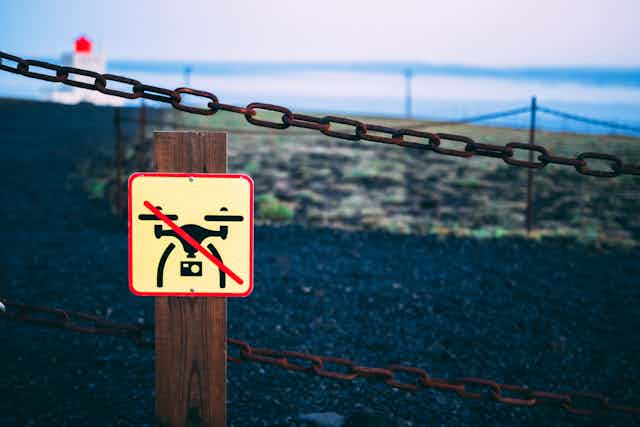Whether they are dropping drugs into prison yards, narrowly avoiding passenger aircraft or invading the privacy of unsuspecting homeowners, drones have been hitting the headlines for all the wrong reasons.
There has been an explosion in the popularity of commercially available drones in recent years. Google Images and other photography sites are now flooded with high-contrast aerial shots and gleaming panoramas, all sourced from invariably high-resolution on-board cameras.
But these spectacular views have come at a price. Drones have gained a poor reputation, especially in cities. As the name suggests, drones give off a distinctive and often unpleasant humming sound that can reverberate through densely populated areas. On a more sinister note, drones can furtively peep through the windows of any residence like a mobile, motorised Big Brother. Given that drones can be flown from a great distance, it may be impossible to identify who lurks behind the lens.
Drones can be annoying and invasive, but they can also be actively dangerous. Near misses between drones and piloted aircraft more than tripled between 2015 and 2017 – usually because of lack of due care from the drone user.

Drones also present a growing security threat. Although the average drone can’t carry anything heavy enough to do significant harm, there is a real concern that they might be weaponised. In 2015, a drone breached White House security and landed on the presidential lawn. Although it was accidental, The Department of Homeland Security has now had to consider the dangers of drones bearing potentially lethal loads.
Unfairly maligned
So yes, the rise of the drone has prompted some serious concern, but, if properly regulated, drones might still be able to do more good than harm. Drones present a unique opportunity to cover difficult ground quickly and safely, providing timely information about their environment without major cost or risk to life and limb.
To give just one example, they will play a crucial role in the increasing prominence of offshore wind power, of which the UK is the world leader. The Dogger Bank Project extends 125km off the Yorkshire coast, and occupies 1,114km² of sea. In such a harsh environment the infrastructure requires regular assessment – and drones could “live” on site, sending a steady stream of images of the condition of the turbines and other equipment to engineers on the mainland.

Drones are invaluable across a wide array of fields. In agriculture, farmers can use drones to identify and selectively target areas requiring fertiliser, saving the farmer money and protecting the environment from secondary contamination. Some countries are already using drones in search and rescue operations – they can cover more ground more quickly, in greater detail and with fewer resources than their human counterparts. In conservation, drones allow researchers to immerse themselves in difficult habitats without significantly disturbing the wildlife, and provide round-the-clock surveillance in areas threatened by poaching.
Read more: How drones are helping in the fight against malaria
The ongoing moors fires around Manchester have crippled a wide area of countryside, hampering emergency services in their efforts to monitor and manage the flames. Step forward: the drone. Well piloted devices could be surveying such areas without much difficulty, picking up crucial early-warning signs and pinpointing key areas to target to bring any blaze quickly under control.
Damage limitation
Drones, therefore, are a double-edged sword. Like a candlestick or a piece of lead piping, their value comes down to how and where they are used – and by whom. How can we minimise their capacity to disturb, irritate and endanger, while retaining the benefits they bring for science, commerce and the emergency services?
First, hobbyists must follow the “drone code”, which outlines basic measures for flying safely and legally. The UK has already begun to regulate drone use, including mandatory registration for every drone owner. Ultimately, the measures must attach the identity of the pilot to the actual, physical drone, so that the owner can be electronically identified in the same way that the owner of a car can be traced from its registration plate.

Drones operating in more remote environments present different challenges – particularly that of keeping them away from air traffic. One solution would be to use automatic dependent surveillance – a technique by which an aircraft’s trajectory is transmitted to others in the area via GPS. Responsible drone users could then keep their devices away from oncoming planes.
Finally, geofencing and no-fly zones should be used to protect sensitive sites from drone encroachment.
Updates to UK regulations are in progress – and the European Aviation Safety Agency (EASA) is producing new operating guidelines. These should provide a framework to develop appropriate technology to ensure that hobbyists fly safely – and hopefully give drones the chance to shed their less than stellar reputation.

